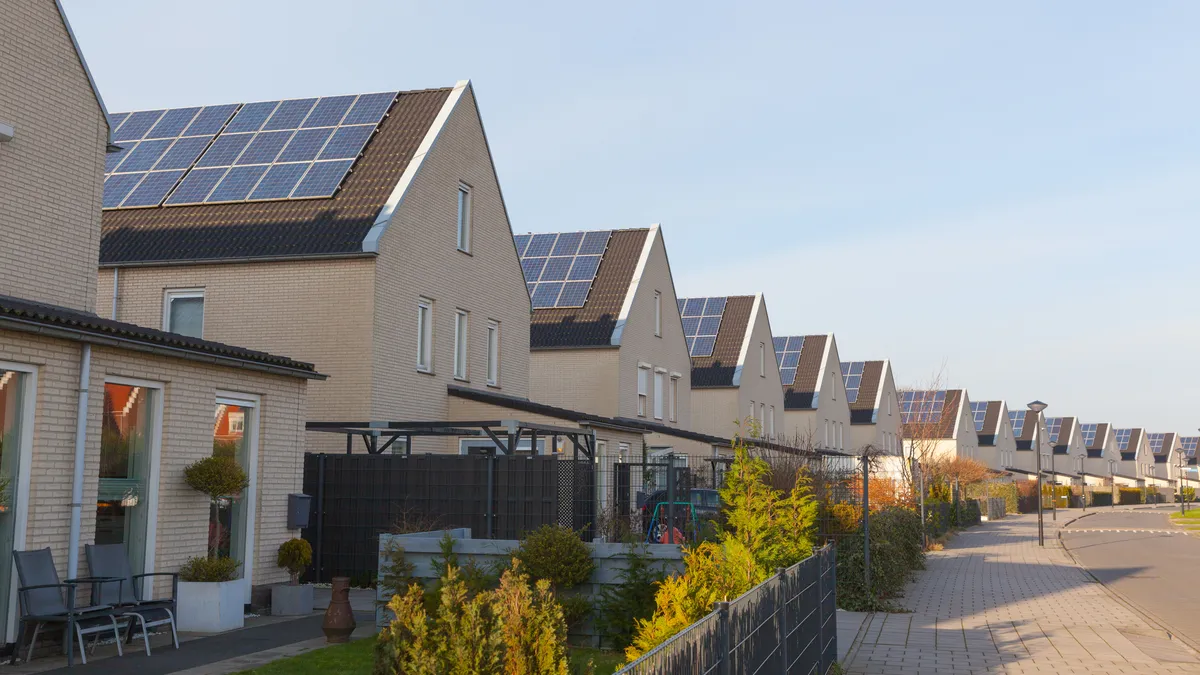Dive Brief:
- Solar deployment in the U.S. reached a record 19.2 GW of solar capacity last year, a volume expected to quadruple by 2030, according to the U.S. Solar Market Insight Report released by the Solar Energy Industries Association (SEIA) and Wood Mackenzie Power & Renewables on Tuesday.
- Residential solar deployment, initially impacted by the pandemic, reached a record 3.1 GW in 2020, up 11% from 2019. Utility solar also had its largest year on record, installing nearly 14 GW or 65% more annual capacity additions than in 2019.
- WoodMac forecast an 18% growth in 2021 over 2020 distributed solar installations, "partly driven by increasing consumer interest in [distributed solar and solar-plus-storage] products for resilience needs," following the Texas winter storms, Michelle Davis, senior analyst at WoodMac, said in an email.
Dive Insight:
SEIA and WoodMac had anticipated 2020 to be a "banner year" for residential solar, but that was before the barriers to installation put in place following shutdowns in response to COVID-19.
"After a slowdown in Q2 due to the pandemic, the solar industry innovated and came roaring back to continue our trajectory as America's leading source of new energy," SEIA president and CEO Abigail Ross Hopper said in a statement.
The report forecast a boom in utility-scale storage in the next decade, even with tax credits for solar phasing out. WoodMac projected annual capacity additions in the U.S. to increase to 41.8 GW by 2030.
"Cost declines in large-scale battery storage, increasing cost competitiveness of utility-scale solar, robust clean energy targets from governments, corporations and utilities, growth in economy-wide electricity demand, and the need to replace retiring coal and natural gas plants will drive a huge volume of new solar deployment," the report said.
Recent blackout events, such as the cold snap in Texas, could also propel consumer interest in distributed solar, according to WoodMac analysts.
"While it's early to tell what exactly the impacts of the Texas storm will be on the distributed solar market, similar events in the last few years have provoked substantial consumer interest in solar and solar-plus-storage systems," Davis said. "We saw increased levels of adoption in California after the power shutoffs from the wildfires in October 2019."
The report credits the two-year extension of the solar investment tax credit passed by Congress at the end of 2020 as leading to a 17% increase in 2021-2025 deployment, with a "rush to get projects signed and eligible" in the last year before the credit is phased down to 10%.
SEIA highlighted the importance of supporting "smart policies" to enable solar deployment.
"The action we take now will determine the pace of our growth and whether we use solar to fuel our economy and meet this climate moment," Ross Hopper said.














